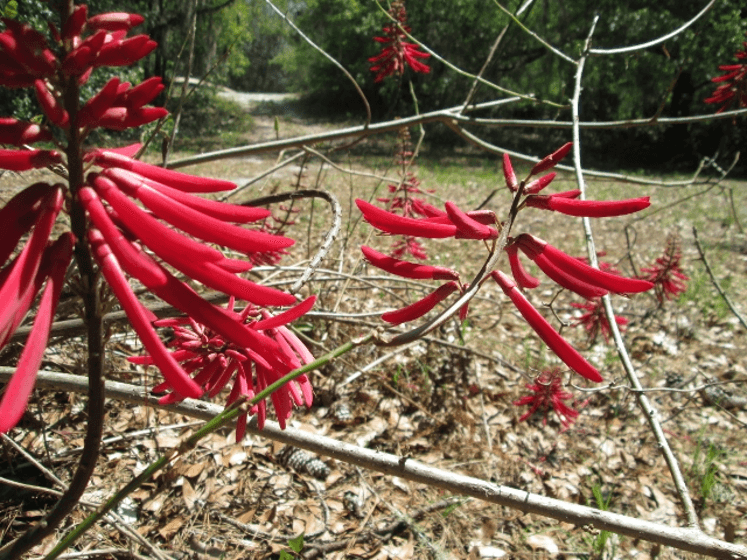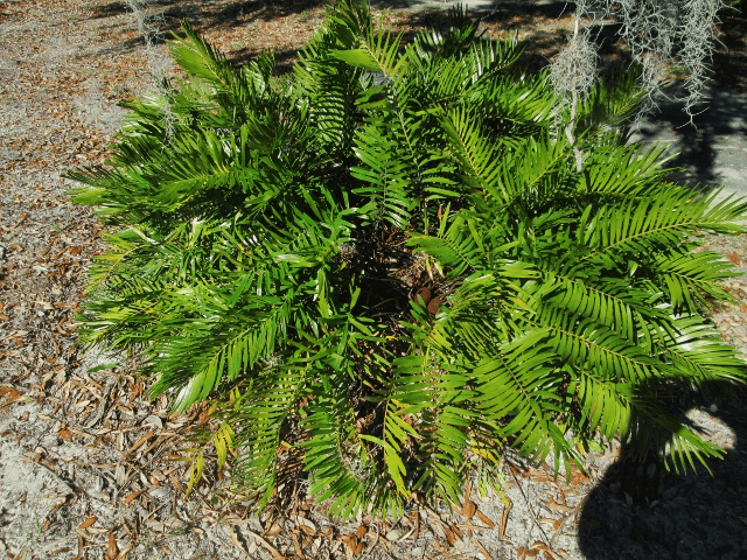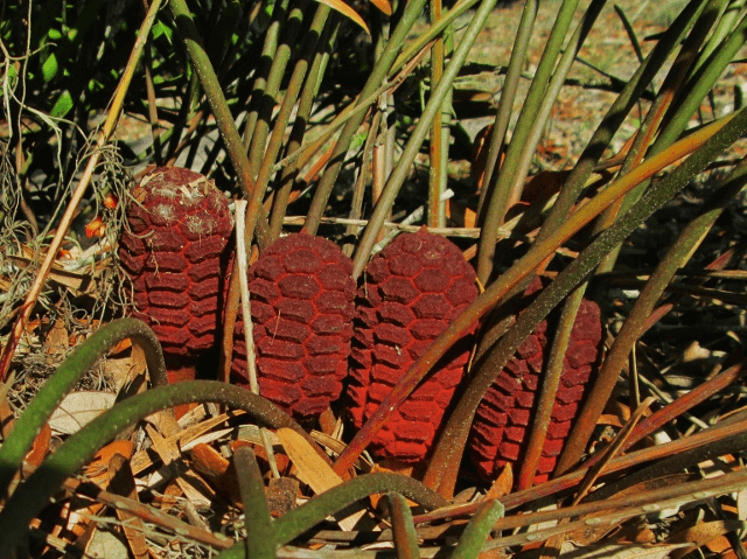Salt Springs Plants

Salt Springs Plants
UPLAND PLANTS AT SALT SPRINGS
”A vast bason on little lake of crystal water, half encircled by swelling hills, clad with Orange and odoriferous Illusium groves…. Zamia pumila, the Erythryna corallodendron, and the Cactus opuntia grow here in great abundance and perfection.” Bartram 1791, Part 2, Chap 5, pp 160-165,
COONTIE
Zamia pumila, Family Cycadaceae
“Zamia pumila…grows in the open pine forest, in tufts or clumps, a large conical striobile disclosing its large coral red fruit, which appears singularly beautiful amidst the deep green fern-like pinnated leaves.”
Coontie occurs in a variety of habitats with well-drained sandy soils, where it prefers to grow in partial shade. This relative of pines and cypress is fern-like, low-growing plant. Leaves forms multi-branched clusters, each leaf composed of up to 30 pairs of leaflets (pinnae). The leaves join together at their base to form a large, underground tuber. Plants are dioecious, meaning males and females on separate plants. Male plants produce cylindrical cones, while females have large, robust reddish seed cones that produce fleshy yellow-orange fruits in fall and winter.
Coontie is poisonous, producing a toxin called cycasin. This toxin affects the gastro-intestinal and nervous systems. It can be eliminated from their underground tubers by leaching in water. The plant was used by Native Americans to make a starch, known as Florida arrowroot, following the leaching process.
CORAL BEAN
Erythrina herbacea Linnaeus, Family Fabaceae
“The Erthryna corallodendrum is six or eight feet high; its prickly limbs stride and wreathe about with singular freedom, and its spikes of crimson flowers have a fine effect amidst the delicate foliage.”
Large shrub to small tree with brilliant scarlet, tubular flowers, that arise from an elongate stem. Scarlet and black poisonous seeds stay attached to the opened 2-3 inch tan seed pods. This showy plant frequents woodlands and clearings on bluffs along the St. Johns River.
PRICKLY PEAR CACTUS
Opuntia humifusa (OCALA ERECT MORPH), Family Cactaceae
“The Cactus opuntia is very tall, erect and large, and strong enough to bear the weight of a man; some are seven or eight feet high: the whole plant or tree seems to be formed of great oval compressed leaves or articulations; those near the earth continually increase, magnify and indurate as the tree advances in age, and at length lose the bright green colour and glossy surface of their youth… The large polypetalous flowers are produced on the edges of the last years leaves, are of a fine splendid yellow, and are succeeded by very large pear shaped fruit, of a dark livid purple hen ripe…”
“The cochineal insects were feeding on the leaves: the females of this insect are very large and fleshy, covered with a fine white silk or cottony web…”
The Opuntia cactus that occurs in the scrub habitats of central Florida is unique in its stature, which has led some botanists to believe that this population may represent a distinct species. Opuntia cactus, outside of Ocala scrub areas, tends to grow prostrate against the ground, but they otherwise looks very similar to the Ocala scrub form.



